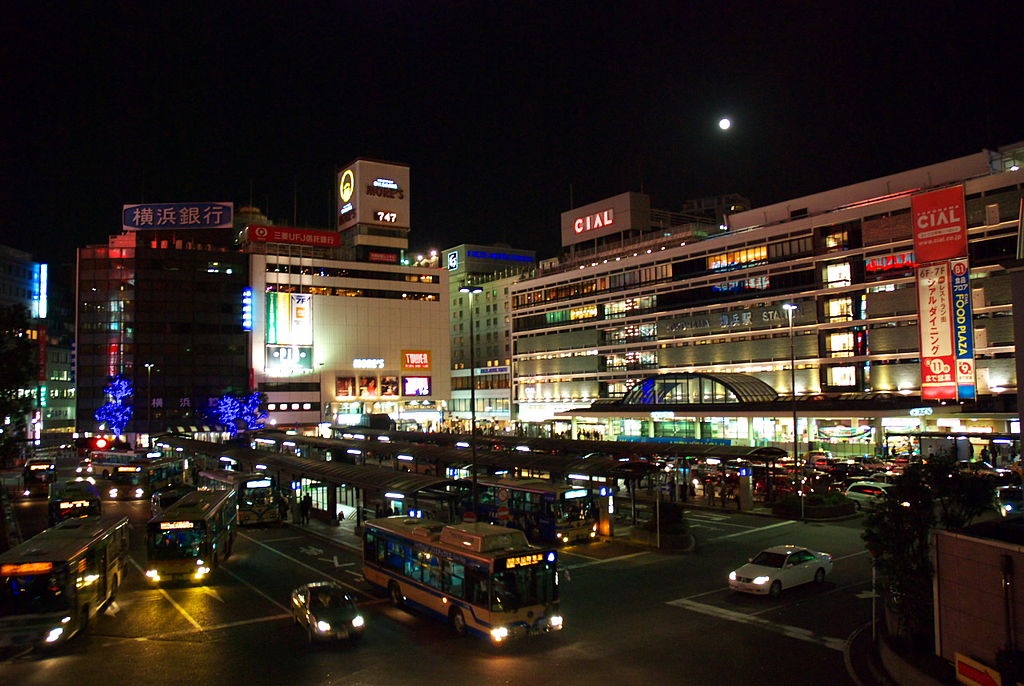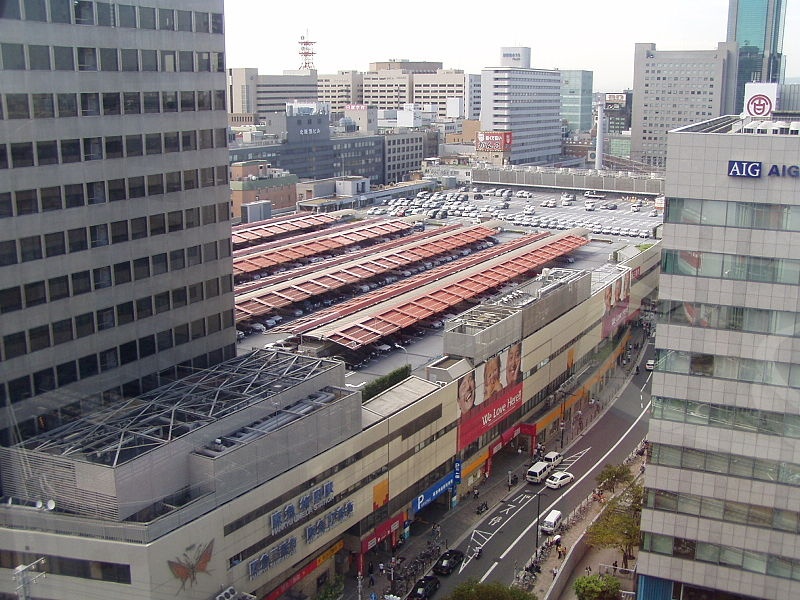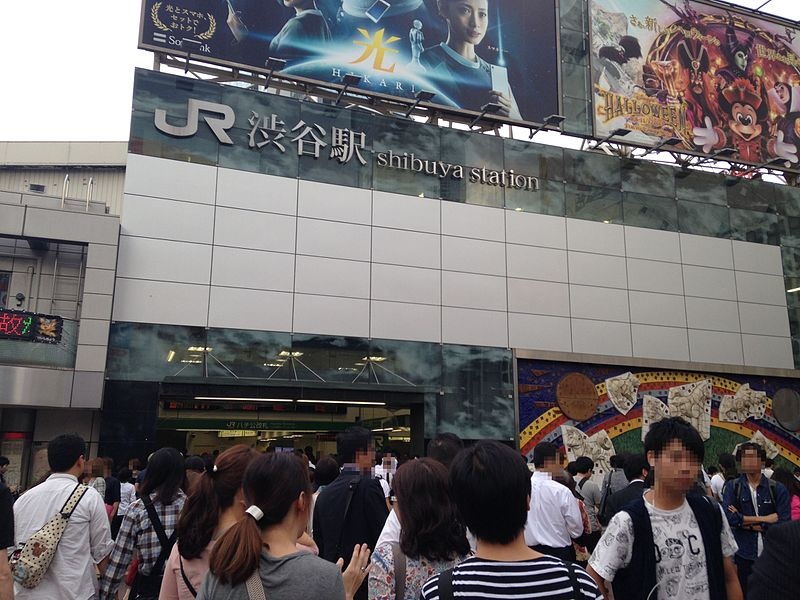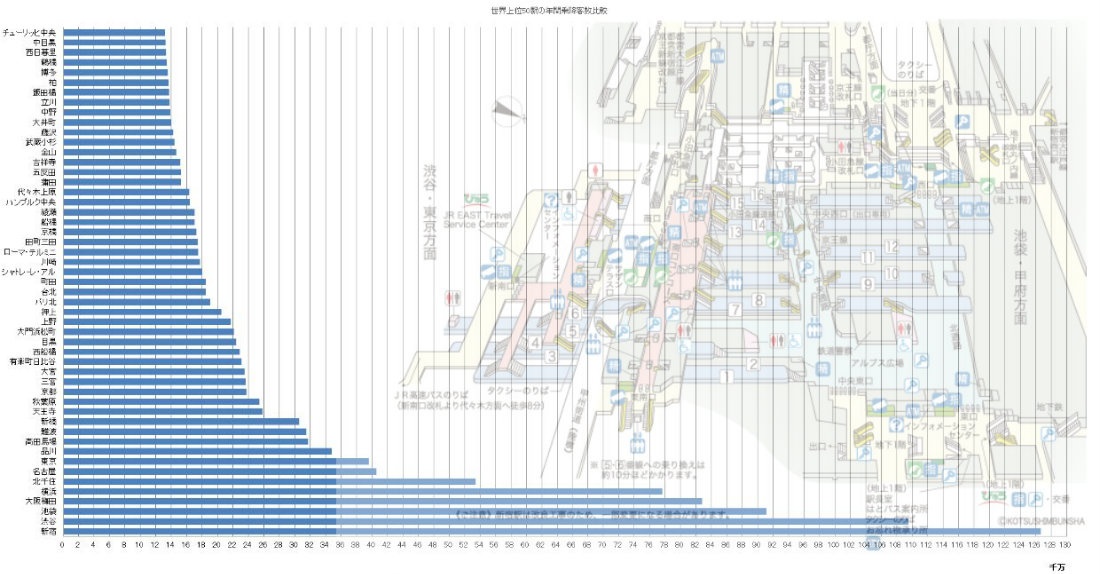Top 5 Busiest Train Stations in the World
Coming as no surprise to those who've experienced its mind-numbingly complex transport system, Japan tops the list when it comes to busiest train stations in the world. What's surprising, however, is the degree to which Japan dominates this list, with all but six of the busiest stations residing here—and about half of them in the Tokyo area!
By SoraNews245. Yokohama Station (Kanagawa) — Approx. 760 million people/year

https://commons.wikimedia.org/wiki/Category:Yokohama_Station#/media/File:Moonlight_Yokohama.jpg
Located in Yokohama City near the border of Kanagawa Prefecture and Tokyo, this was one one of Japan’s first great stations. A few moves and destruction caused by the Great Kanto Earthquake left it in its current location.
The station is the nucleus of a vertically and horizontally sprawling commercial area hosting most—if not all—of Japan’s major chain stores, like Takashimaya and Yodobashi Camera.
4. Umeda Station (Osaka) — Approx. 820 million people/year

https://commons.wikimedia.org/wiki/Category:Umeda_Station_(Hankyu)?uselang=ja#/media/File:Osaka-hankuumeda-exttop.jpg
This multilevel, serpentine station hosts ever-running rivers of people bumping into one another walking in every direction at the same time. Remember one of those typical video game levels where you constantly walk through one door only to find yourself in the same room until you throw your controller at your little brother? It’s kind of like that.
3. Ikebukuro Station (Tokyo) — Approx. 910 million people/year

https://ja.wikipedia.org/wiki/%E6%B1%A0%E8%A2%8B%E9%A7%85#/media/File:Ikebukuro_east_entrance.jpg
Located in the heart of Tokyo, it’s no wonder Ikebukuro Station is so heavily used. As a result, it’s home to a department stores like Seibu and Parco, where you can get all of your shopping done. Ikebukuro Station feeds lines into Shinjuku Station along with…
2. Shibuya Station (Tokyo) — Approx. 1.09 billion people/year

https://commons.wikimedia.org/wiki/Category:Shibuya_Station#/media/File:Hachiko_Entrance_of_Shibuya_Station_(JR).jpg
Also in the center of Tokyo, Shibuya Station has a kind of nice atmosphere to it that can almost distract an agoraphobe from the hordes of commuters passing through. The station also features large, eye-catching artwork from Taro Okamoto.
There’s also a statue of Hachiko near one of the exits. Hachiko was the dog immortalized in Japanese and (to a lesser extent) American movies as the dog who faithfully waited for his dead master outside of Shibuya station for nine years.
Shibuya and Ikebukuro Stations stand on either side of Shinjuku Station. You can probably see where this is going.
1. Shinjuku Station (Tokyo) — Approx. 1.26 billion people/year

https://en.wikipedia.org/wiki/File:JR_Shinjuku_Station.JPG
Many people are often in awe of Shinjuku Station’s massive size or complain about its complexity, built to handle over 1 million daily commuters. We don’t know what their problem is. Here’s a perfectly simple map of the place:
http://www.jreast.co.jp/estation/stations/866.html
Actually, this is just the JR East railway section of the station, which accommodates four other train operators. So multiply that map by about three and you’ll have the rough makeup of the basic station. Throw in all the other shopping and entertainment facilities often found around train stations and you have a labyrinth that’d make David Bowie give whistling admiration. It certainly explains why JR East offers a map app specially designed for this station alone!
http://en.rocketnews24.com/2013/01/30/the-51-busiest-train-stations-in-the-world-all-but-6-located-in-japan/
The above graph leaves little in the way of concrete details such as the date of the information, so it’s hard to gauge how accurate the data is (it was originally posted in 2013). But checking a few of the stations’ statistics it seems to check out.
To view a full list of all 51 stations, be sure to read the full story at RocketNews24 below!
Related Stories:
Kansai and Kanto prove again that they are each distinct regions when it comes to food.
Shibuya’s Hachiko has a new feline pal, and they look absolutely adorable together!.
Moving to Tokyo? Here are the three best, most reasonable neighborhoods to live in.




